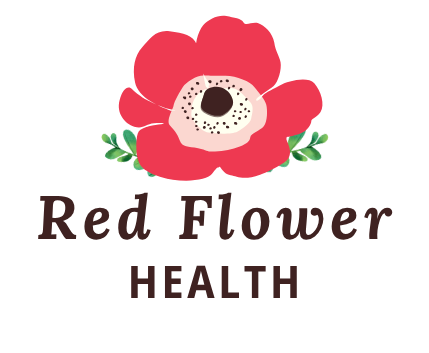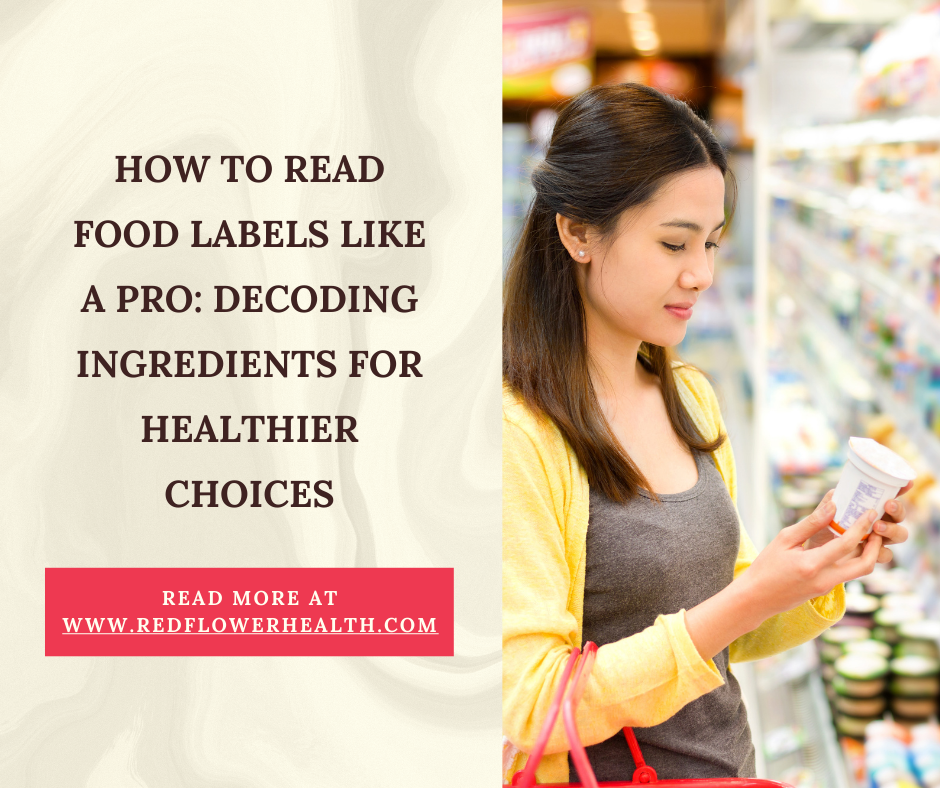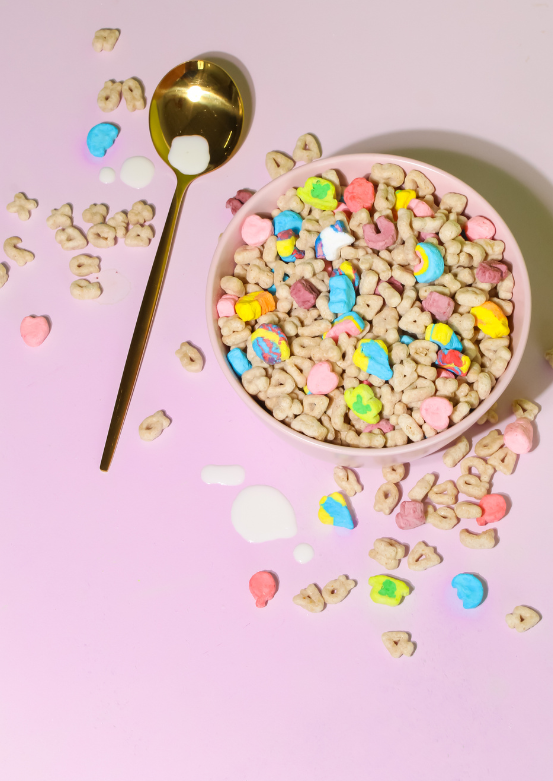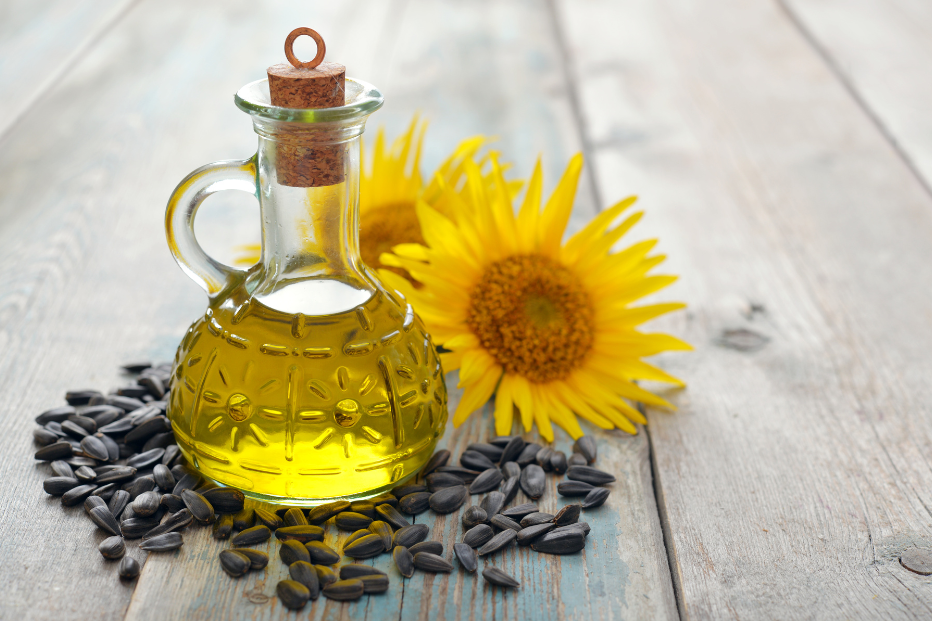How to Read Food Labels Like a Pro: Decoding Ingredients for Healthier Choices
“But friend, you can learn to read food labels with confidence. And once you understand a few simple principles, you’ll be empowered to make better decisions—without spending hours in the grocery aisle.”
Ever felt overwhelmed while staring at a food label? You’re not alone. Between the long, scientific ingredient names and the flashy marketing claims (“all-natural!” “sugar-free!” “immune-boosting!”), it can feel like you need a degree just to pick out cereal.
And for so many women I work with, that confusion often turns into frustration—or worse, defeat. They’re trying to feed their families well, stay healthy, and honor God with their bodies… but food labels can feel like a secret code no one ever taught them how to crack.
But friend, you can learn to read food labels with confidence. And once you understand a few simple principles, you’ll be empowered to make better decisions—without spending hours in the grocery aisle. If you’ve ever googled ‘how to decode food labels’ or ‘which ingredients to avoid,’ this is for you!
In this blog, we’ll walk through how to decode ingredient lists, spot red flags, and make informed choices that align with your goals and values. Let's equip you to steward your health (and your family’s!) with grace and intentionality—not guilt or fear.
First, Why Ingredients Matter
Many of us were trained to only look at the calorie count or grams of fat—but that only tells a small part of the story. The real power is in the ingredients list—that fine print on the back of the label. That’s where the truth about a food’s quality lies.
Here’s what I want you to remember:
The fewer ingredients, the better. The closer to how God made it, the better [1].
Ingredients are listed in order of quantity—so the first few ingredients matter most [2]. If sugar, white flour, or seed oils are in the top three? That’s a clue [4].
Common Pain Points You Might Relate To:
“I don’t know which ingredients are actually healthy or not.”
“There’s so much mixed messaging out there—I don’t know who to trust.”
“I want to feed my family better but I’m not sure where to start.”
“I feel disempowered every time I read a label. It’s overwhelming!”
“Sometimes I try really hard… then I get busy and slack off.”
Sound familiar? You’re in the right place!
Quick Wins: What to Look For (and What to Watch Out For!)
Let’s break this down into digestible chunks. Here are some things to keep your eyes peeled for:
What to Look For:
Real ingredients you recognize (e.g., “rolled oats,” “brown rice,” “almonds”) [3]
Whole grains listed as the first ingredient in grain products (e.g., “whole wheat flour” not “wheat flour” or “enriched wheat flour”) [1]
Minimal ingredients (five or fewer is a good general rule) [1]
Healthy fats like olive oil, avocado oil, nuts, or seeds [5]
Natural sources of flavor or color (e.g., paprika or turmeric for color)
12 Ingredient Red Flags to Watch Out For:
Here’s a helpful cheat sheet of ingredients to approach with caution:
Top 12 Ingredient Red Flags
Hydrogenated oils/trans fats – Linked to inflammation and heart disease [3].
High-fructose corn syrup – A heavily processed sweetener that may spike blood sugar and trigger cravings [3].
Artificial sweeteners (see section below!) [3]
Artificial colors (e.g., Red 40, Yellow 5) – Potentially linked to behavioral issues and hyperactivity in kids [7].
Monosodium glutamate (MSG) – May cause headaches or sensitivity in some [8].
Preservatives like BHA, BHT, sodium benzoate – Used to prolong shelf life but controversial in terms of health [9].
Sugar alcohols (e.g., sorbitol, xylitol, erythritol) – Can cause GI upset in some people [10].
“Enriched” flours – Stripped of fiber and nutrients, then “enriched” artificially [11].
Artificial flavors – Vague and often lab-created; better to steer toward real, recognizable ingredients when possible [12].
Excess added sugars – Look for ingredients ending in “-ose” (glucose, fructose, etc.) or syrup forms (like brown rice syrup) [4].
Sodium Nitrate/Nitrite – Preservatives commonly found in processed meats like bacon, hot dogs, deli meats, and sausages that have been linked to an increased risk of certain cancers [9].
Carrageenan – a thickener potentially linked to inflammation and inflammatory conditions [13].
Bonus Tip: “Natural flavors” aren’t always harmful, but they’re not always transparent either [12]. If they’re one of the first few ingredients, or show up frequently in a product you eat often, it’s worth doing a little research.
Hidden Sugars: Sneaky by Design
Sugar hides under many names—food manufacturers know people are looking for it, so they disguise it. Watch out for:
Cane juice / evaporated cane juice
Corn syrup / high fructose corn syrup
Dextrose, maltose, fructose, sucrose
Brown rice syrup
Fruit juice concentrate
Barley malt [4]
Pro tip: If you see more than one type of sugar in the list, the company may be “splitting” them up to make it look like there’s less than there actually is.
Spotlight: Artificial Sweeteners vs. Sugar Alcohols – What’s the Deal?
Sugar substitutes are commonly found in foods marketed as 'low carb' or 'keto-friendly'. It’s easy to lump all sugar substitutes together, but there are different types with different effects.
Sugar alcohols like erythritol, sorbitol, and xylitol are common in keto and low-carb products. While they don’t spike blood sugar as much as regular sugar, they can cause bloating or digestive discomfort for some people, especially in large amounts [10].
Artificial sweeteners—like sucralose (Splenda), aspartame (Equal), and acesulfame potassium—are hundreds of times sweeter than sugar. While calorie-free, research is mixed on their impact on gut health, blood sugar, and cravings. Some people tolerate them well—others notice headaches, cravings, or bloating [6].
If you're looking for a more natural option, stevia and monk fruit may be better choices [14]. Just remember: sweeter isn’t always better. Pay attention to how you feel.
Preservatives & Artificial Dyes: Why They Matter
Some preservatives are used to prolong shelf life or enhance color—but they may also cause health concerns, especially for sensitive kids or adults. Common ones to watch for:
BHT, BHA, TBHQ (preservatives linked to potential hormone disruption and cancer) [9]
Sodium nitrate/nitrite (often found in processed meats) [9]
Artificial dyes like Red 40, Yellow 5, Blue 1 (linked to hyperactivity and behavioral issues) [7]
Simple tip: Choose products with fewer ingredients and names you recognize.
Fortified Vitamins and Minerals: Are They Helpful?
You might see food labeled with “added vitamin D” or “fortified with iron.” While this can be a good thing, remember that added nutrients don’t necessarily make an ultra-processed food healthy [4].
A sugary cereal with a multivitamin label is still… a sugary cereal.
Focus on getting nutrients from whole, real foods whenever possible. The closer to how God made it, the better.
What About Oils? Seed Oils & Processing Concerns
There’s a growing concern about highly processed seed oils like:
Soybean oil
Corn oil
Canola oil
Cottonseed oil [15]
These oils are cheap and commonly used in processed foods, but they’re often extracted with chemicals and may contribute to inflammation [15].
Instead, look for products made with olive oil or avocado oil, or better yet—cook at home with whole ingredients when you can [15].
Real Talk: It’s Okay to Not Be Perfect
Let me just say: I don’t always read every label. I’ve gone through seasons where I’m super vigilant… and then seasons where I’m just trying to get dinner on the table.
This is not about guilt. This is about growth.
We’re aiming for progress, not perfection. Every label you read builds confidence. Every better choice you make matters.
So if you’ve ever felt like you’re failing because you didn’t know an ingredient was sneaky? Give yourself grace. Learning this stuff takes time!
God doesn’t require perfection—He invites us to steward what we’ve been given. So take a breath. Ask for His wisdom. And start where you are!
Simple Habits That Build Confidence:
Start reading the first 3–5 ingredients on your most-used pantry items [4].
When you see something you don’t recognize—look it up!
Use tools like the EWG Food Scores app or Fooducate for quick info—but keep in mind these apps aren’t always 100% accurate [16, 17]. They can be helpful starting points, but learning to interpret labels yourself is still the most reliable tool in your toolbox!
Aim to eat more single-ingredient, minimally processed foods when possible [3].
Don’t trust the front of the package. Always flip it over [3]!
Be vigilant—manufacturers do change formulas [16]. Even your go-to brand might switch things up.
Final Encouragement
Friend, you don’t need to master this overnight! But with every label you read, every step you take, you’re equipping yourself to live with more freedom, more wisdom, and more peace.
You don’t have to fear food! Just stay curious, stay prayerful, and keep learning.
Want More Tips Like This?
Get more real-world tips on meal prepping, label reading, and healthy living straight to your inbox—plus access to free workshops, guides, and more to support your journey to whole health!
Believing in your best health,
Coach Tiffany
Subscribe
Want to get my latest blog posts, helpful health tips, and free resources delivered straight to your inbox?
Sign up for my email list and be encouraged in your journey toward better physical, mental, and spiritual health—one small step at a time!
P.S. If you’re feeling ready to take a more personal step toward your health goals, I’d love to talk with you. Book your free 30-minute call here.
Footnotes
[1] Blanco, Bess. FRESH Start for Health. Bess Blanco Media, 2013. Fresh Start for Health. https://freshstartforhealth.org/fresh-start-workbook.
[2] “How to Read Food and Beverage Labels.” National Institute on Aging, 13 April 2025, https://www.nia.nih.gov/health/healthy-eating-nutrition-and-diet/how-read-food-and-beverage-labels.
[3] Pratt, Heather. “Reading Food Labels.” Natural Grocers, 13 April 2025, https://www.naturalgrocers.com/article/reading-food-labels.
[4] Bjarnadottir, Adda. “How to Read Food Labels Without Being Tricked.” Healthline, 13 April 2025, https://www.healthline.com/nutrition/how-to-read-food-labels.
[5] Sachdev, Poonam. “Slideshow: Healthy Fat Foods.” WebMD, 13 April 2025, https://www.webmd.com/diet/ss/slideshow-healthy-fat-foods.
[6] Petre, Alina. “Artificial Sweeteners: Good or Bad?” Healthline, 13 April 2025, https://www.healthline.com/nutrition/artificial-sweeteners-good-or-bad.
[7] Bell, Becky. “Food Dyes: Harmless or Harmful?” Healthline, 13 April 2025, https://www.healthline.com/nutrition/food-dyes.
[8] Zeratsky, Katherine. “What is MSG? Is it bad for you?” Mayo Clinic, 13 April 2025, https://www.mayoclinic.org/healthy-lifestyle/nutrition-and-healthy-eating/expert-answers/monosodium-glutamate/faq-20058196.
[9] Tiberian, Janet. “5 Preservatives to Avoid.” MDVIP, 13 April 2025, https://www.mdvip.com/about-mdvip/blog/5-preservatives-avoid.
[10] Metropulos, Megan. “Are sugar alcohols good or bad for you?” MedicalNewsToday, 14 April 2025, https://www.medicalnewstoday.com/articles/320901.
[11] “Whole Grain: Refined, Enriched… What’s the Difference?” Intermountain Health, 14 April 2025, https://intermountainhealthcare.org/blogs/whole-grain-refined-enriched-whats-the-difference.
[12] Newman, Tim. “Food flavorings: What are they, and are they safe?” Zoe, 14 April 2025, https://zoe.com/learn/food-flavorings-safety.
[13] Barrell, Amanda. “Is carrageenan safe to eat?” MedicalNewsToday, 14 April 2025, https://www.medicalnewstoday.com/articles/323117.
[14] “Guide to sugar substitutes.” UCLA Health, 14 April 2025, https://www.uclahealth.org/news/article/guide-sugar-substitutes.
[15] “Seed Oils: Are They Actually Toxic?” Cleveland Clinic, 14 April 2025, https://health.clevelandclinic.org/seed-oils-are-they-actually-toxic.
[16] “Frequently Asked Questions.” Environmental Working Group, 14 April 2025, https://www.ewg.org/foodscores/content/faq/.
[17] Ronco, Stephanie. “What We Learned About Fooducate.” Food and Health Communications, 14 April 2025, https://www.foodandhealth.com/blog-free/learning-about-fooducate.









